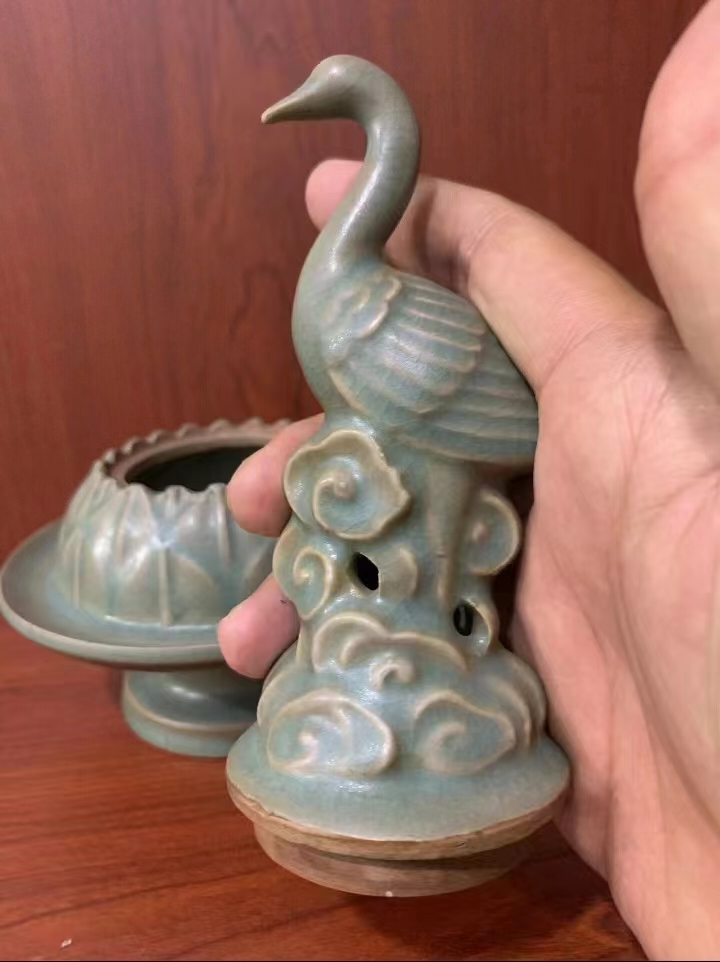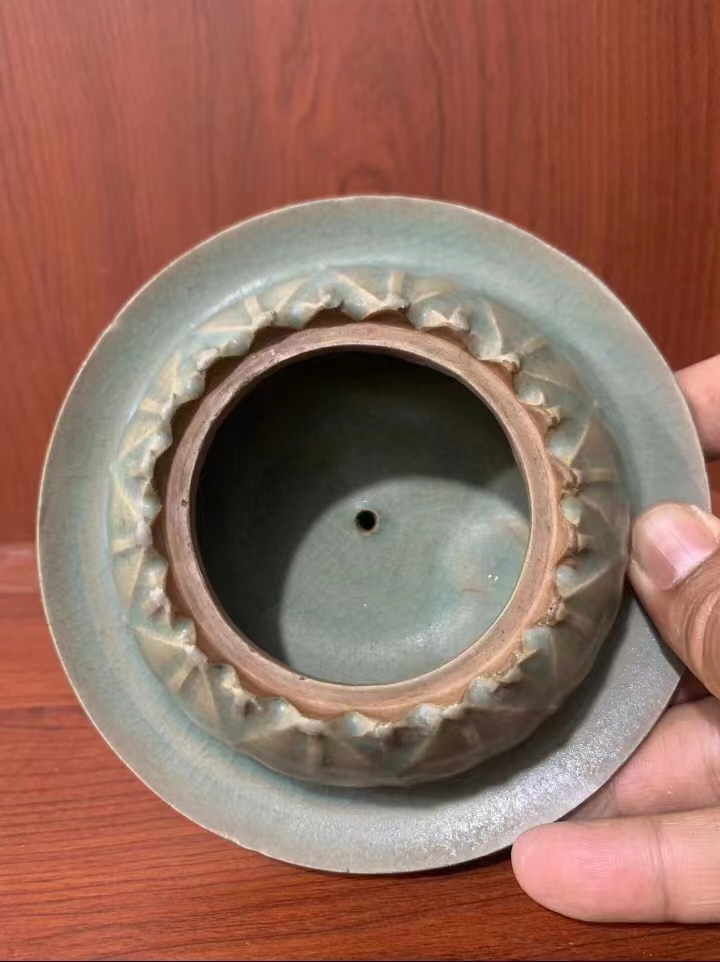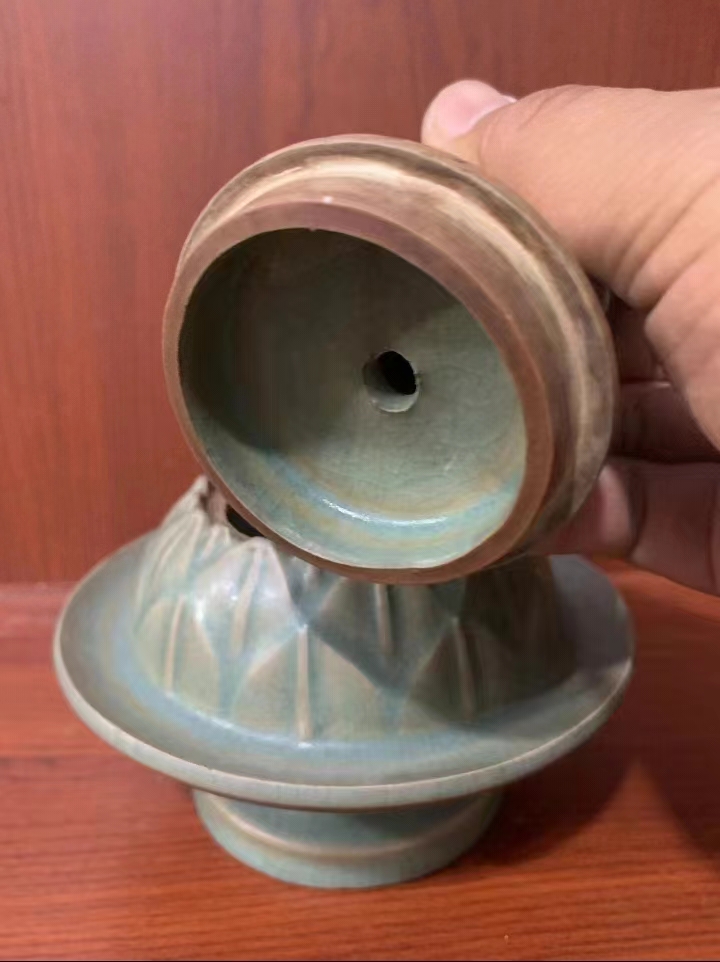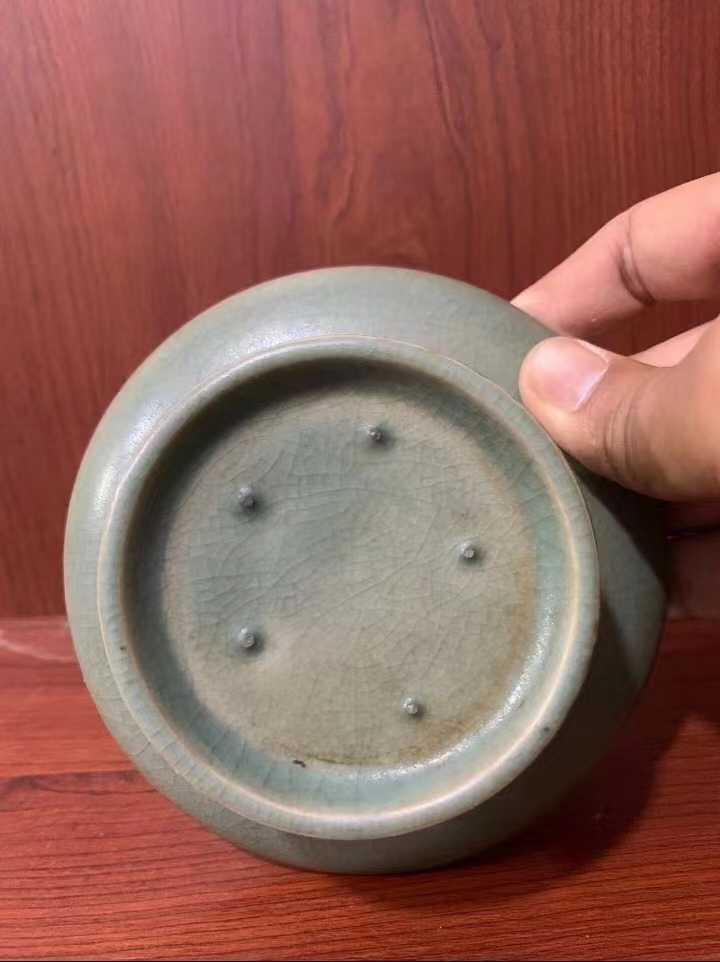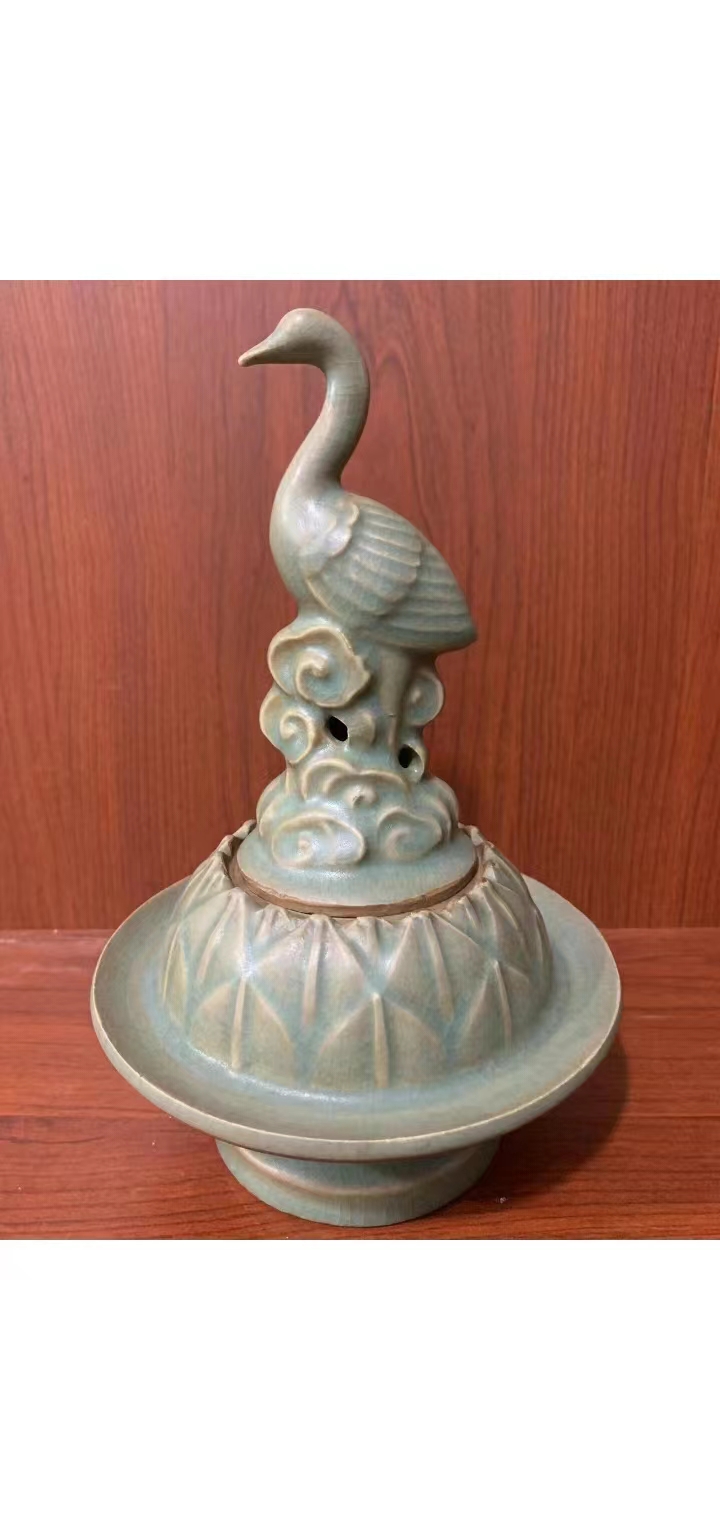汝瓷造型古朴大方,以名贵玛瑙为釉,色泽独特,有“玛瑙为釉古相传”的赞誉。随光变幻,观其釉色,犹如“雨过天晴云破处”,“千峰碧波翠色来”之美妙,土质细润,坯体如侗体其釉厚而声如磬,明亮而不刺目。器表呈蝉翼纹细小开片,有“梨皮、蟹爪、芝麻花”之特点,被世人称为“似玉、非玉、而胜玉”。宋、元、明、清以来,宫廷汝瓷用器,内库所藏,视若珍宝、可与商彝周鼎比贵。近年来,由于我国加大了对文化产业的重视,导致艺术品的身价水涨船高,珍稀的艺术品其市场热门度,成交率都非常不错。投资艺术品也成为众多投资者的第一选择。所以无论从收藏角度还是经济价值角度来看,该件藏品都十分值得入手
The item is marked as: Ruyao Xianhe Incense Porcelain Stove. This collection is well preserved, with a first-class appearance and an overall antique and elegant design. The details of the casting are also very exquisite. Its casting process is very complex. This collection condenses the entire casting history of Chinese culture, is very precious, and is also loved by collectors and major auction houses. Ru Kiln, one of the five famous kilns of the Song Dynasty, was named after its location in Ruzhou, Henan Province during the Song Dynasty. It has been discovered that Ru Kiln was fired in Zhanggongxiang, Ruzhou City, Henan Province and Qingliangsi Village, Daying Town, Baofeng County. Ru porcelain ranks first among the five famous kilns of the Song Dynasty, including Ru, Guan, Ge, Jun, and Ding. It is known in the history of Chinese ceramics as the "leader of Ru kiln". Ru kiln is one of the famous traditional Chinese porcelain varieties, and it was the main representative porcelain of the royal family during the Northern Song, Southern Song, and Ming dynasties in China.
Ru porcelain has a simple and elegant design, with precious agate as its glaze and unique color, earning the praise of "agate as glaze passed down from ancient times". As the light changes, the glaze color is as beautiful as "after the rain, the clouds break through" and "a thousand peaks, blue waves, and emerald colors come". The soil is fine and smooth, and the body is like a Dong body. The glaze is thick and the sound is like a bell, bright but not dazzling. The surface of the utensil is small and open with cicada wing patterns, and has the characteristics of "pear skin, crab claw, and sesame Fried Dough Twists". It is called "jade like, non jade, and superior to jade" by the world. Since the Song, Yuan, Ming, and Qing dynasties, Ru porcelain used in the palace has been stored in the inner treasury and is regarded as a precious treasure, comparable to the Shang, Yi, and Zhou tripods. In recent years, due to China's increased emphasis on the cultural industry, the value of artworks has skyrocketed, and the market popularity and transaction rate of rare artworks are very good. Investing in art has also become the first choice for many investors. So from both a collection perspective and an economic value perspective, this collection is definitely worth buying



